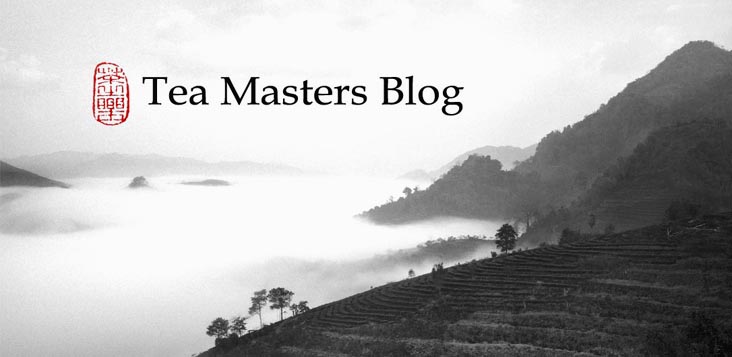 |
| Sung, Ming, Qing dynaties and modern era tea methods |
 |
| Sung and Ming styles |
Sung dynasty tea used to be steamed green tea, turned into powder and then whisked in a black bowl. For Kakuzo Okakura (The book of tea), this represents the romantic period of tea. Tea drinkers saw tea as a reflection of their spiritual journey. Why? Because tea is so sensitive to how it is whisked. Your state of mind is reflected in the tea you prepare. Zen meditation helps to control yourself and was intricately linked to the tea preparation. Zen is the spirit of Sung tea.
After the Yuan dynasty, it's a peasant who became Emperor Hongwu of the Ming dynasty. Starting 1391, he only accepts gifts of loose leaves tea (instead of compressed). Green tea was then brewed in big teapots. This marks a return to nature, to simplicity. Loose green tea is the least processed tea. It's therefore also the cheapest to produce and the most affordable for the population. The big teapot helps dilute the light, but concentrated flavors of spring tea buds. Drinking green tea is all about the natural purity and freshness of its taste that connects us to nature. Nature is the spirit of Ming tea.
Oolong is invented during the Qing dynasty and the Chaoshan region prepares this complex, semi-oxidized and roasted tea in a small Yixing, preferably zhuni, teapot, (or a shantou teapot) with water boiled in a small Nilu and 3 small porcelain ruoshen cups. The small size of the teaware demonstrates a search for quality and refinement. The spirit of Gongfu cha is minimalism and elegance rooted in the Chinese culture.
 |
| Qing and modern styles |
Each method, each era has its pros and cons. We are privileged to live at the beginning of a new era, the information age, and we can learn the best from each period. This will help us create or adapt our own new brewing style.
For example, the rational approach of having a very standardized brewing process works very well to select and/or compare teas. This is true when we treat tea as a beverage, a simple commodity. It's like having a set of standard questions for meeting somebody (name, age, origin, where did you go to school, what's your occupation...) It is helpful in the beginning of the relationship. But once you get to know this person, you will start to treat it more and more individually. You'll go to a certain type of restaurants together or do certain activities or discuss certain topics with this particular person. Likewise, once you know a tea well, you'll tire of always brewing it the same way. You'll want to experiment and try what type of ware are the best fit, how long it prefers to brew. That's how you'll find the best way to brew these leaves.
So, the competition brewing standard helps you quickly to get to know the basic character and qualities of your tea. (I also recommend that you use standard and rational methods to compare tea cups, teapots, various water, kettles...)
It's a good start to learn about tea, but there is no skill in following a 'recipe' like a robot (7 grams, 30 seconds....) Even in recipes, you're supposed to judge on your own when a dish is ready. The cookbook may say 30 minutes at 200 degrees, but you might shorten or lengthen the time if your eyes tell you the crust isn't as it should be, or if the smell isn't well done yet.
So, at some point, you'll have to start using your senses to brew. This is the second step on the path to a great cup of tea.
You'll go even further if you find your inspiration in the quest for quality and refinement from the Chaoshan gongfu cha. You can also pursue very natural and pure flavors, like during Ming dynasty. Tea may even lead you to a more peaceful self if you use these moments of calm to connect body and mind... China's past shows us that tea is so much more than just a beverage!










3 comments:
I really enjoy your blog, Stephan, and your spirit and love for tea culture. The photos are very nice too; especially like the outdoor one on the nice rock. Thank you.
Thanks Lorant,
I'm glad you're also enjoying the Oolongs I sent you!
... because the real joy of tea is when the theory becomes reality!
Post a Comment